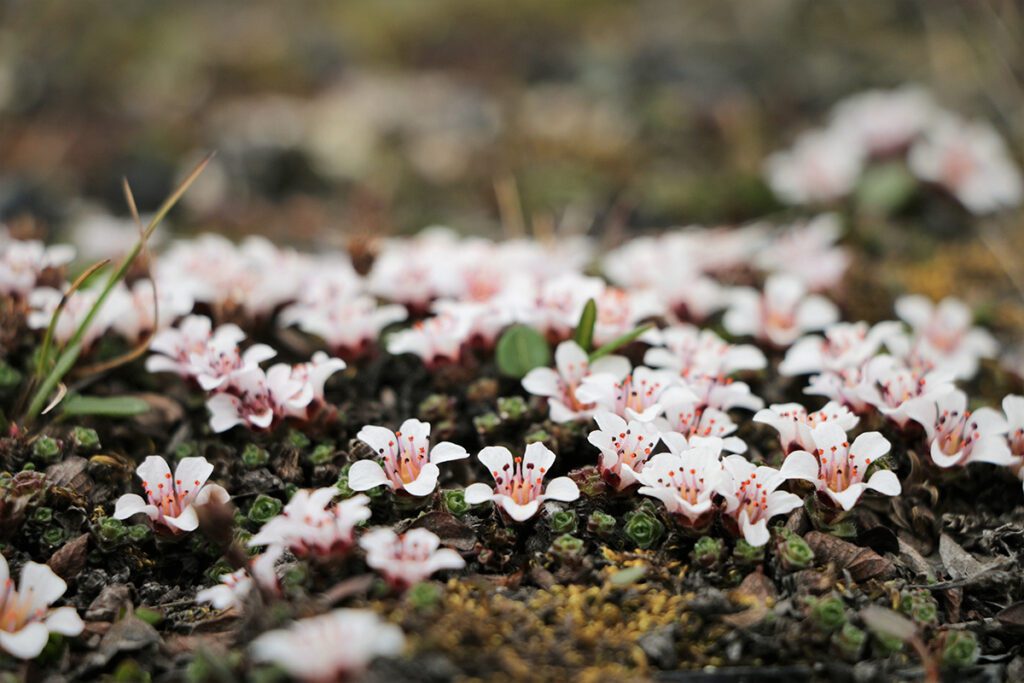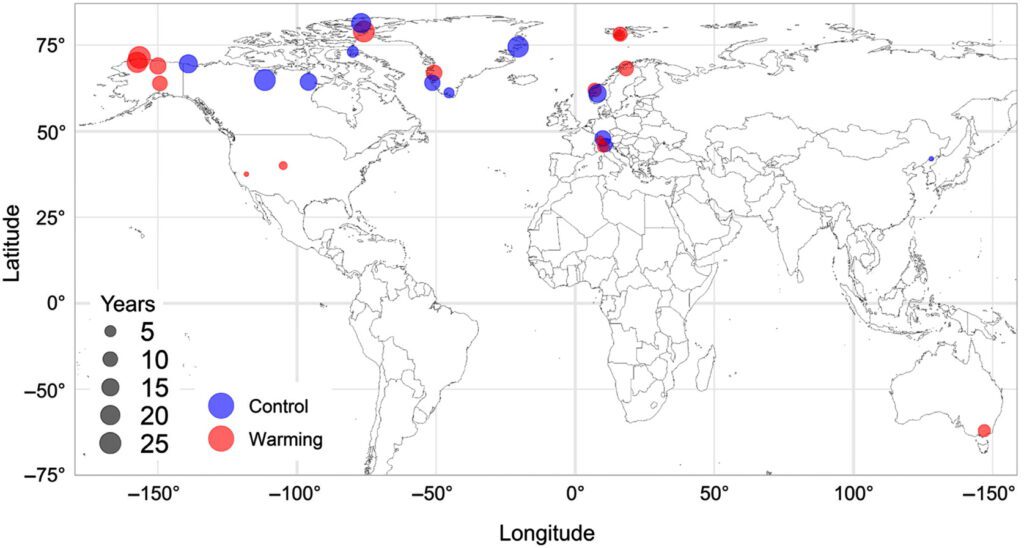International research network tracks 30 years of ecosystem changes in the Arctic
Today’s headlines remind us that the Arctic is warming about twice as fast as the rest of the world.
Thirty years ago, a group of tundra researchers concerned with this issue established the International Tundra Experiment (ITEX). They were interested in how the Earth’s northernmost environment would respond to rising temperatures over time.
What started out as studies of individual plant species has grown into an international network researching warming effects on entire ecosystems. Researchers from 11 countries, including all Arctic nations, are part of ITEX today.
In recognition of the 30th anniversary of ITEX, the open access journal Arctic Science is featuring important work accomplished by the network, including warming effects on seed viability, soil microbes, and plant diversity and phenology.
The ITEX network consists of more than 30 experimental sites across the subarctic (between about 50°N and 70°N latitude) and the high Arctic (up to the North Pole at 90°N latitude). At most sites, when an experiment is underway, you’ll find open top chambers (OTCs). About 1 m2 in size, these framed enclosures, wrapped in hard sheets of fiberglass, passively increase air temperatures within the enclosed area by 1–2 °C to simulate future climate warming.
Open top chambers (OTCs) | Katrín Björnsdóttir, Panchen et al. https://doi.org/10.1139/as-2020-0045
Sometimes researchers add snow fences to the experimental design to manipulate snow depth or add regular game fencing or chicken wire to prevent grazers from interfering.
Other times researchers bury tea bags in the soil within the chambers.
This is what Katrín Björnsdóttir did to measure plant litter decomposition in warmed OTCs. Referred to as the Tea Bag Index method, tea bags are buried in the soil of each OTC and extracted later to find how much they decomposed.
“We used sites in Iceland’s subarctic and Norway’s high Arctic. We could not find responses to the warming in the high Arctic, but in Iceland decomposition increased with warming. These results indicate that warming may lead to faster decomposition of plant litter. This can be linked to more carbon going into the atmosphere,” explains Björnsdóttir, a PhD student at the University of Gothenburg.

Tea bags as proxies for decomposition of leaf litter | Katrín Björnsdóttir
The Tea Bag Index is a useful method because the types of tea bags used—rooibos or green tea—are available all over the world. Researchers can readily replicate the study design and compare results in larger synthesis studies.
But the Tea Bag Index is only one of many ways the ITEX network replicates study design. Over three decades, researchers have replicated OTC experiments at an impressive number of experimental sites, recording how plants respond to climate change.
“ITEX is unique in that it is the only long-term uniform experiment that exists targeting climate change in the Arctic in this way,” explains Dr. Mats Björkman, Researcher in the Alpine and Polar Ecology group (APE) at the University of Gothenburg.
The APE group examines the effects of warming on vegetation at the Latnjajaure experimental site in northern Sweden. Using a 26-year data set, Björkman and colleagues looked at changes over time in the composition of five plant communities growing in warmed OTCs and ambient control plots (plots of ground exposed only to ambient warming conditions without OTCs).
They found shrubification—the expansion of shrubby species across the Arctic due to warming temperatures—in all five communities.

Saxifraga | Katrín Björnsdóttir
What’s interesting is that they detected shrubification for both the OTC and control conditions; the shrubification was more advanced in the experimentally warmed OTCs but still present in the control plots as a response to current climate change.
“We see that things are changing over time in the ambient control plots and that everything seems to be more pronounced in the warmed chambers. So, we get a view of ambient climate warming and of what we believe will be the future,” he explains.
The easily replicable protocols across the ITEX network are immensely powerful. The resulting data allow researchers to understand shifts in plant communities that already happened and predict what other shifts could occur.
Björkman points out that thanks to these protocols, which were established in the 1990s during the early years of ITEX, researchers can compare results across massive regions. This geographical scope makes findings more impactful, inspiring other researchers to do the same.

Locations of tundra study areas with plant phenology observations | Prevéy et al. https://doi.org/10.1139/as-2020-0041
“We established the Herbivory Network in 2013 after discussions of how to include herbivores in ITEX experiments,” says Dr. Isabel Barrio of the Agricultural University of Iceland. “To measure herbivore effects on plant communities, we needed standardized protocols.”
Barrio and colleagues created and published protocols for quantifying herbivore activity at different spatial scales.
Their protocols describe how at a local scale—say within an ITEX OTC or control plot—individual plants can be examined for evidence of herbivory. At this scale, researchers can mainly look for invertebrate herbivory. Larger and free-ranging herbivores eat plants across a broader, landscape scale. To measure herbivory at this scale, researchers can count fecal pellets.

Barrio et al. https://doi.org/10.1139/as-2020-0020
The use of common protocols means data are collected in a way for researchers to make robust comparisons from year to year and help predict effects of climate change.
“Herbivores are very important to ecosystems and can even counteract some warming effects,” says Barrio. “Tundra plants tend to increase biomass production with warming, but that biomass could be consumed by herbivores, possibly balancing parts of those changes.”
The “easy-to-implement” protocols also mean that quantifying animal–plant interactions can continue for years to come.
NEW SPECIAL ISSUE
The International Tundra Experiment
The three researchers also commented on the importance of long-term monitoring for policy decisions. Several committees of the Intergovernmental Panel on Climate Change (IPCC) have used ITEX research to inform their reports.
“The take-home message is that if there was only one ITEX site, results would lead to nothing,” says Björkman. “But we have so many sites in so many regions, with researchers willing to share data. We are seeing similar trends across all ITEX sites, and that is our strength. It is a glimpse of what future changes we can expect with climate change, and how they will impact our planet.”

Svalbard, Norway | Katrín Björnsdóttir






